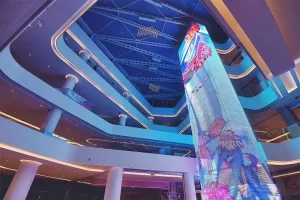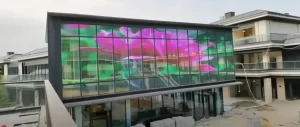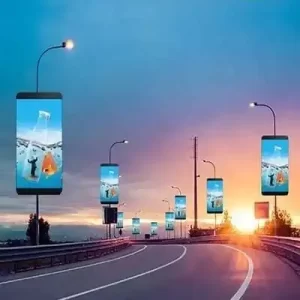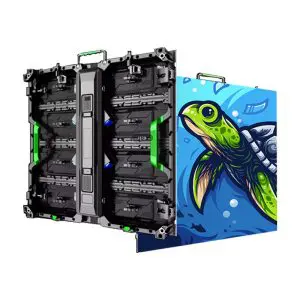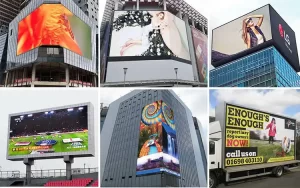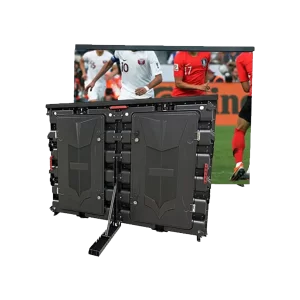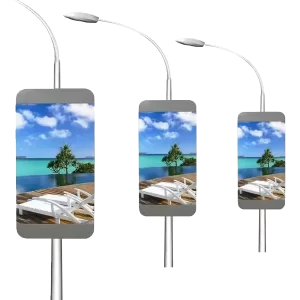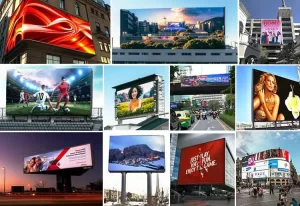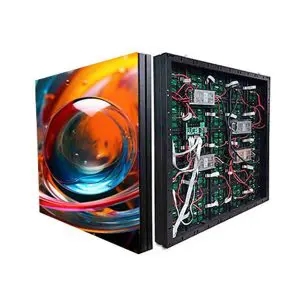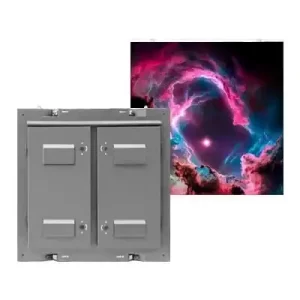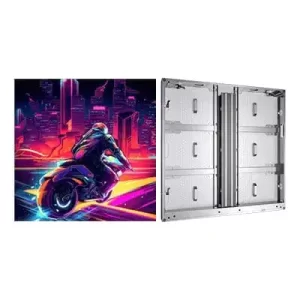Why Is Brightness Important for Outdoor LED Screens: Ultimate Guide to Reasons, Features, Benefits, Costs, and Tips
Why is brightness important for outdoor LED screens? Brightness, measured in nits (candela per square meter), is a critical factor that determines how well an outdoor LED screen performs in challenging lighting conditions, such as direct sunlight or variable weather. High-brightness screens (typically 5,000–10,000 nits) ensure clear, vibrant visuals without washout, making them essential for applications like billboards, stadiums, and events where visibility directly impacts engagement and effectiveness. With the global outdoor LED display market projected to reach $15 billion by 2028, growing at a CAGR of 8.5% (source: MarketsandMarkets), understanding why brightness is important for outdoor LED screens helps businesses avoid common pitfalls and invest in displays that deliver optimal performance.
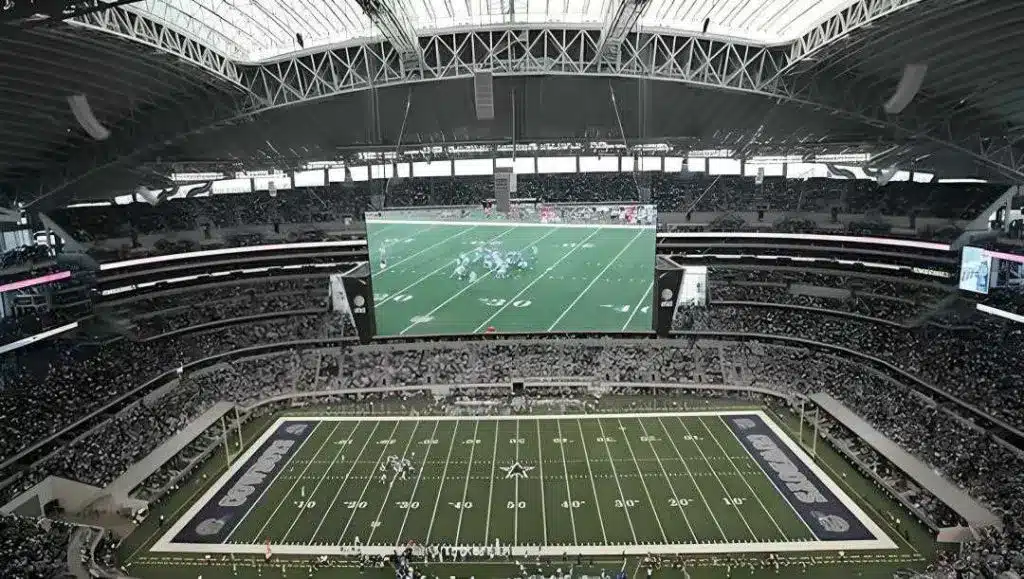
Why Is Brightness Important for Outdoor LED Screens? Key Reasons Explained
Brightness is the backbone of outdoor LED screen performance, as outdoor environments present unique challenges like intense sunlight, glare, and variable lighting. Here’s a detailed breakdown of the primary reasons why brightness is important for outdoor LED screens, with impacts and examples:
- Overcoming Ambient Light and Sunlight Glare
Reason: Outdoor screens face direct sunlight, which can wash out images on low-brightness displays (under 3,000 nits). High brightness (5,000+ nits) counters this by ensuring content remains visible.
Impact: Low brightness leads to 40% reduced legibility, causing message loss and lower engagement.
Example: Billboards in sunny cities like Los Angeles require 7,000 nits to stay readable midday; without it, ads become ineffective. - Ensuring Visibility from Various Distances and Angles
Reason: High brightness maintains contrast and color accuracy across wide viewing angles (140°–160°), crucial for large outdoor audiences.
Impact: Improves safety and communication in public spaces; low brightness causes distortion, reducing effectiveness by 30%.
Example: Stadium screens during day games use 8,000 nits to ensure fans at all seats see clear replays. - Enhancing Durability and Longevity in Harsh Conditions
Reason: Brightness ties to LED quality and heat management; high-brightness screens often include better cooling, preventing fade from UV exposure.
Impact: Extends lifespan by 20-30%; low-brightness models overheat faster.
Example: Festival screens in hot climates last longer with high-nits designs. - Improving Energy Efficiency and Cost Savings
Reason: Modern high-brightness LEDs use efficient chips (e.g., SMD) that balance luminosity with low power, reducing bills.
Impact: Saves 30-50% on energy; important for 24/7 outdoor use.
Example: Smart city displays with auto-dimming high-brightness tech cut costs by $1,000/year per screen. - Boosting Audience Engagement and ROI
Reason: Brighter screens make content more vivid, increasing attention and recall by 35% (Nielsen).
Impact: Higher ad revenue or event success; dim screens lead to missed opportunities.
Example: Outdoor concerts with high-brightness screens see 25% more social media shares. - Adapting to Variable Weather and Lighting
Reason: Brightness allows performance in rain, fog, or dusk; sensors auto-adjust for consistency.
Impact: Ensures reliability; low brightness fails in overcast or bright conditions.
Example: Public info boards in rainy UK cities use 6,000 nits for constant visibility. - Compliance with Safety and Regulatory Standards
Reason: High brightness ensures legibility for emergency messages in outdoor settings.
Impact: Meets standards like ISO for public safety.
Example: Transportation hubs require 5,000 nits for clear alerts. - Future-Proofing for Advanced Applications
Reason: High brightness supports 4K/8K and AR, preparing for tech trends.
Impact: Longer usability; low-brightness limits upgrades.
Expert Insight: Why is brightness important for outdoor LED screens in events? It prevents “blackout” effects in sunlight, ensuring seamless experiences— a must for ROI in high-stakes setups.
Case Study: The Super Bowl halftime show uses screens with 8,000 nits, viewed by 100 million, with zero visibility complaints despite outdoor stadium lighting.
Key Features of High Brightness Outdoor LED Screens
- Nits Levels: 5,000–10,000 for outdoor.
- Anti-Glare Coatings: Reduce reflections.
- Auto-Adjustment: Sensors for light changes.
- High Contrast: 5,000:1 ratios.
- Durability: IP65+ weatherproofing.
Benefits of High Brightness for Outdoor LED Screens
- Clear Visibility: In all lights.
- Durability: Against elements.
- Engagement: 35% higher.
- Efficiency: Energy savings.
- ROI: Better ad performance.
Technical Specifications Related to Brightness
| Specification | Low Brightness Impact | High Brightness Standard | Importance for Outdoors |
|---|---|---|---|
| Nits Level | <3,000 (Washout) | 5,000–10,000 | Visibility in sun |
| Contrast Ratio | <3,000:1 (Dull) | >5,000:1 | Color depth |
| Refresh Rate | <2,000 Hz (Flicker) | ≥3,840 Hz | Smooth motion |
| Pixel Pitch | P10+ (Grainy) | P3–P6 | Sharpness from distance |
| IP Rating | IP54 (Vulnerable) | IP65+ | Weather protection |
Costs Associated with Brightness in Outdoor LED Screens
Higher brightness adds 20-30% to costs: $1,000–$3,000 per m² for high-nits models. ROI through durability.
Buying Tips Considering Brightness
- Assess Environment: High nits for sunny areas.
- Test in Conditions: Demo in daylight.
- Balance with Efficiency: Choose auto-dimming.
- Budget for Quality: Avoid cheap low-nits.
Installation and Maintenance Guide
- Planning: Light assessment.
- Mounting: Secure for weather.
- Calibration: For brightness.
- Maintenance: Clean coatings.
Costs: $5,000–$20,000.
Future Trends in Outdoor LED Screen Brightness
- Adaptive AI brightness.
- Micro-LED for higher nits with low energy.
- Sustainable high-brightness tech.
FAQ: Common Questions on Why Is Brightness Important for Outdoor LED Screens
- Why is brightness important for outdoor LED screens? Ensures visibility in sunlight.
- What brightness level is needed for outdoor LED screens? 5,000+ nits.
- How does low brightness affect outdoor LED screens? Causes washout and low



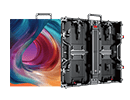

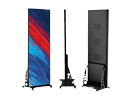
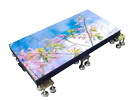



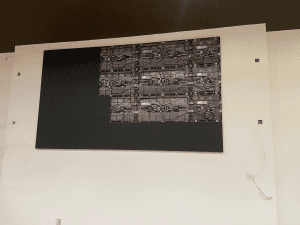
-e1632597207641-300x224.jpg.webp)
